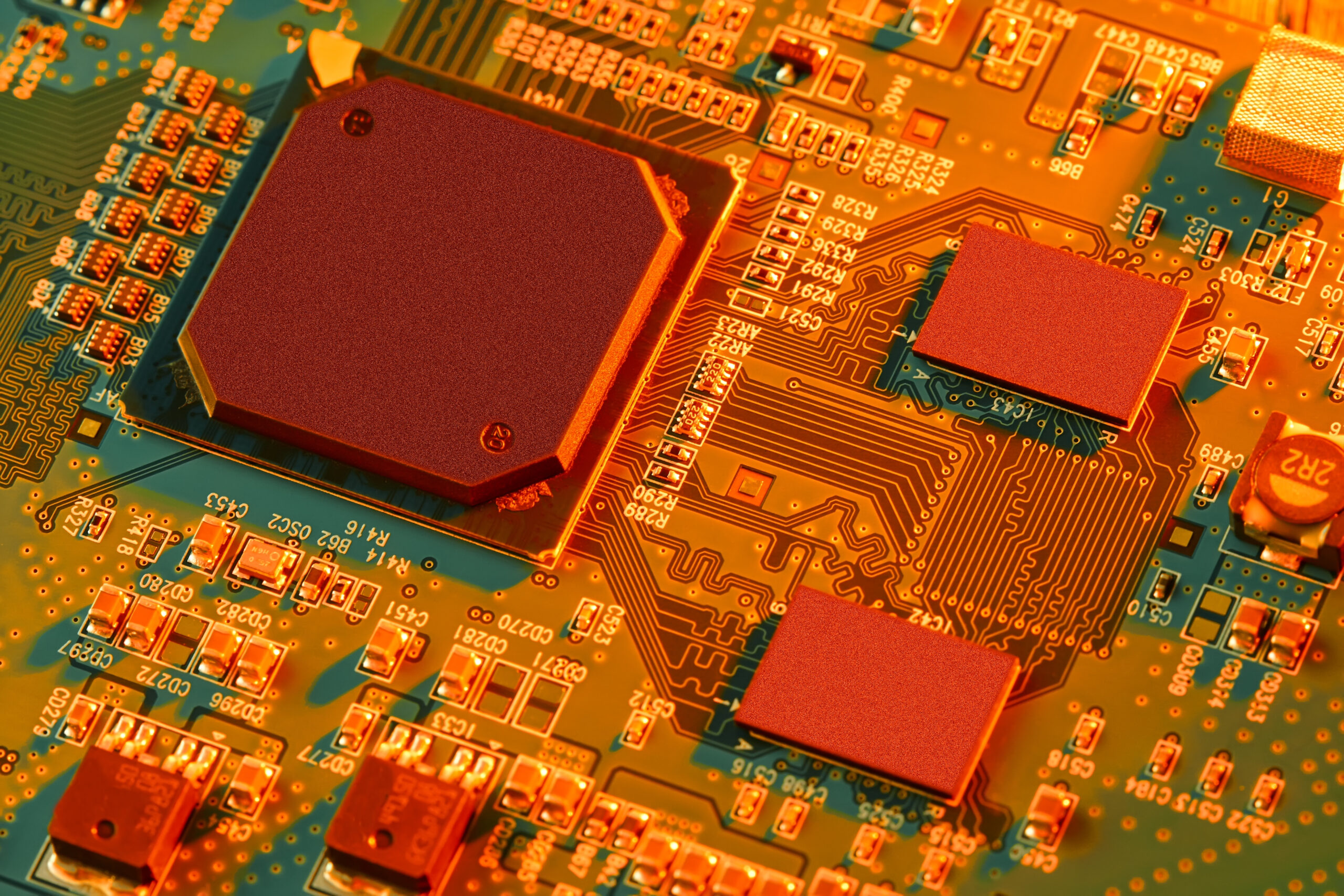22/09/2021
There are very few areas of technology that develop at the same astounding pace as computers. The impact that this has on our daily lives extends beyond the obvious improvements in processing power in our smartphones. The unrelenting advance of computer technology drives change and inspires innovation in virtually every industry. One of the key industries where innovation driven by computer technology has had the most profound effect is healthcare. According to statistics released by the EPO in March this year, medical technology accounted for the largest proportion of European patent applications filed in 2020, while pharmaceuticals and biotechnology were the fastest growing.
Developments within the Digital Healthcare sector itself come from a number of different areas of technology, both emerging and established. This mini-series of blogs will highlight the impact that cutting-edge research in different fields is having.
In this article we focus on the role that computational modelling is having in the Digital Healthcare revolution, and highlight some exciting recent applications of computer simulations in a modern healthcare setting.
The Living Heart Project
In the healthcare sector, one of the emerging trends is the shift away from the traditional “one size fits all” approach to therapies towards personalised treatments that are tailored to the patient’s individual genetics and physiological characteristics.
The Living Heart Project provides a profound demonstration of the role that computational modelling will play in the personalisation of healthcare. The project represents a collaboration between 30 organisations, including more than 100 cardiovascular specialists from across research, industry and medicine. The project is led by Dassault Systèmes® under the Simulia™ brand.
The initial goal of the project is to develop and apply a realistic computer simulation of a human heart – a so-called “digital twin”. To achieve this, Magnetic Resonance Imaging (MRI) data of the person’s heart is collected and used to create a virtual three-dimensional model of the heart. This 3D model is then transformed, using sophisticated mathematical modelling of the electrical and mechanical tissue properties, into a realistic beating model of the living heart.
These digital twins have widespread potential applications: they can replace real patients during the design and testing of new drug therapies and can be used to accurately predict the efficacy of different implant designs. For example, a patient who is in need of a stent (an implant for opening a blocked blood vessel) could have different designs of stent tested via simulation using the digital twin of their heart before undergoing surgery.
While in the short to medium-term the project is focused on modelling the heart, the long term goal of the project is to expand the work to other organs.
Virtual Assay
Bringing a new therapeutic drug from small-scale in-vitro tests through to widespread clinical adoption is a challenging and expensive process. Before any new treatment can be accepted for therapeutic use in humans, it must first undergo a thorough pipeline of pre-clinical testing to make sure that the compounds used are safe and effective at treating the target disease.
Conventionally, animal experiments play a significant role during the preclinical testing stages, and often find favour due to the possibility of producing animal models that mimic various human pathologies. However, it has been shown that the effectiveness of therapeutic drugs in animal experiments and the subsequent effectiveness during human clinical trials does not always correlate.
In addition, two people will very rarely respond to the same dose of the same drug in the same way due to natural variations in physiology. The use of animal testing therefore raises both ethical and translational questions, and research into the replacement, reduction, and refinement of animal models in preclinical testing is a very active field of research.
Researchers from the Department of Computer Science at Oxford University have therefore developed a computational modelling-based approach to reducing the reliance on animal models in the drug development pipeline. The software, called Virtual Assay, uses data collected from a large number of human subjects to create a population of virtual models that can be used to simulate and predict the effects of various drugs on a naturally variable population.
A study published in 2017 evaluated the performance of the computational-modelling approach at predicting whether various reference compounds would cause abnormal heart rhythms. The results were promising, with the Virtual Assay software achieving 89% predictive accuracy, compared to 75-80% accuracy achieved in similar studies using animal models.
Using fluid dynamics to reduce infection risk during the COVID-19 pandemic
The impact of computational modelling on the healthcare sector is not confined to the development of new therapies. During the COVID-19 pandemic, researchers worldwide have been focussing their efforts on understanding, predicting, and preventing the spread of the SARS-CoV-2 virus.
As we know, the virus is carried by airborne respiratory droplets, typically expelled when an infected person coughs. Therefore, finding ways to reduce the risks of airborne transmission is crucially important. One environment where this is of particular importance is in hospitals, where large numbers of infected patients in close proximity presents a heightened risk to hospital staff.
When the St. Francis hospital in France needed to expand their capacity for COVID-19 patients, they were faced with the challenge of keeping contaminated areas separated from the rest of the patient population. The hospital team collaborated with a team of scientists from Dassault Systèmes® to investigate ways to reduce the flow of contaminated air out of the designated COVID-19 treatment area into the main hospital.
The scientists used a 2D floorplan of the hospital wing to create a detailed 3D model, taking into account various factors that influence the flow of air through the building – open/closed windows, heat sources such as radiators and computers, air extraction vents, and the patients themselves. Virtual patients were placed within the model, and fluid dynamics used to investigate how virus particles expelled by those patients would spread through the building. Based on the model, the scientists found that the containment of the virus could be improved by opening/closing certain windows at key locations throughout the building.
The examples above are just the tip of the iceberg when it comes to applications of computational modelling in a healthcare setting. In such a fast-evolving and competitive area of technology, protecting your company’s next big innovation has never been more important.
Patenting Computer Models in Europe
Regrettably, despite the obvious benefit that computational models provide key industries, it is not straightforward to obtain patent protection for pure computational models – particularly in Europe. This is because a European patent can only be granted for an invention, but this definition of an “invention” does not cover programs for computers, mathematical methods and mental acts (which cover computational models in their purest form), as these are not considered to be inherently technical.
However, computational models may patentable when the model is applied within a technical field – such as Digital Healthcare. In such instances, a patent may be awarded where the contribution of the model is new, involves an inventive step, and serves a technical purpose. Some examples of the use of computational models for a technical purpose in the Digital Healthcare industry include:
- controlling a specific technical system or process, for example an X-ray apparatus, or processing the image data produced by such systems;
- deriving the body temperature of a subject from data obtained from an ear temperature detector; and
- providing a genotype estimate, and corresponding confidence level, based on an analysis of DNA samples.
A further challenge arises where computational models are used when providing a medical diagnosis. This is because in many jurisdictions, including Europe and the UK, patents cannot be granted for methods of treatment or diagnosis performed on animals or humans. This is to ensure that medical practitioners are not prevented from operating on patients due to the monopoly provided by a granted patent.
However, this exclusion only applies to the extent that the computational model is able to deduce a medical diagnosis for curative purposes: simply collecting, analysing and reporting data is permissible so long as a medical professional is able to make a final diagnosis based on that data. The extent to which the computational model is able to determine a final diagnosis is therefore a key factor in whether a patent may be obtained for such models.
At Reddie & Grose, our experienced multidisciplinary Medical Devices and Digital Healthcare team are on hand to advise on the IP challenges of the Medical Technology industry and to provide advice for seeking and securing patent protection.
This article is for general information only. Its content is not a statement of the law on any subject and does not constitute advice. Please contact Reddie & Grose LLP for advice before taking any action in reliance on it.



